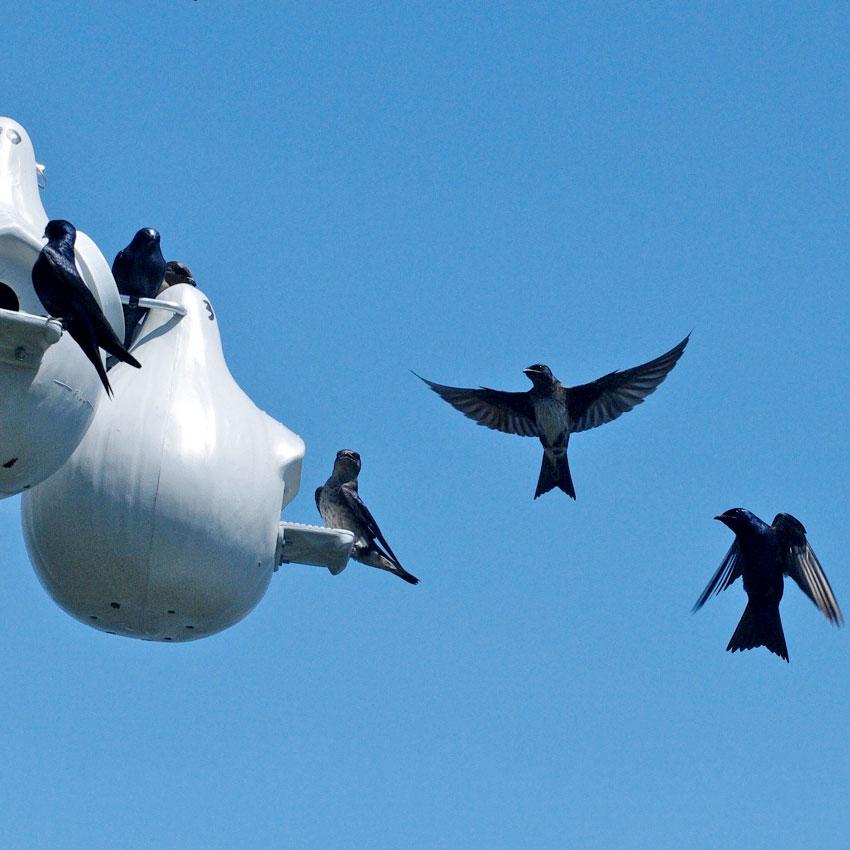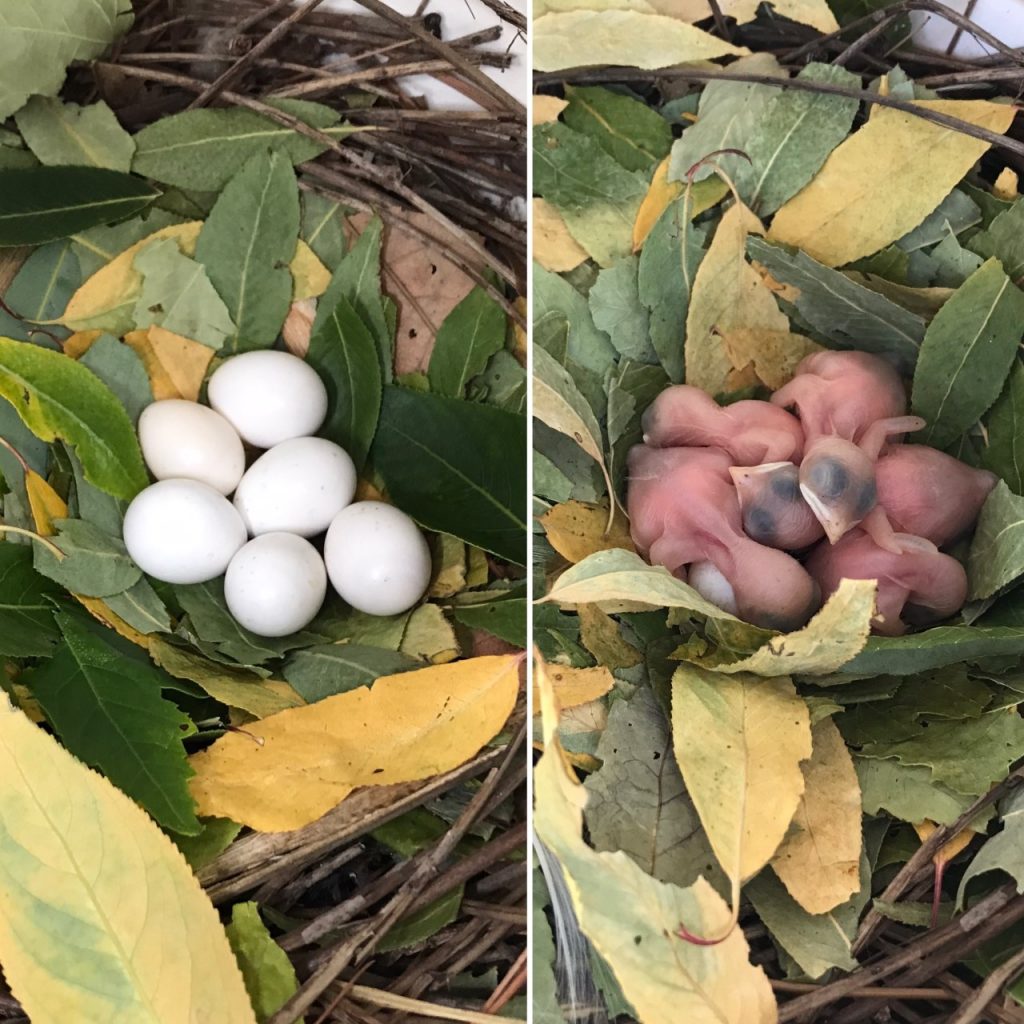When you walk along the shoreline of Wintergreen Lake during the summer, you will hear a bird chirping robotic melodies. You look up as a Purple Martin, the continent’s largest swallow, gracefully swoops up and over the water, looking for insects to catch.
The Eastern Purple Martin, Progne subis, relies completely on human-created nesting structures, like gourds, for nesting and raising their offspring. Little is known about the nesting habits of Purple Martins before humans became stewards. It is thought to be that Native Americans would hang dried plant gourds and the Eastern Purple Martin would nest in it. The birds evolved alongside people providing housing and are now completely dependent on that relationship!
At the Kellogg Bird Sanctuary, we place the gourds up on the rack the first week of April, coinciding with the arrival of the birds from their wintering habitat. Weekly nest checks are conducted, where we lower the rack of gourds to look inside each one, counting the number of eggs and chicks that have hatched. June gives us eggs and hatchlings, and the beginning of July gives us the first fledglings of each year, where the chicks have grown in their full feathers and jump out of the gourd for their first flight! Extremely agile and acrobatic, swallow species have been known to eat fire ants, grab feathers in mid-air, and catch crickets tossed into the air by humans!
As wonderful as these birds are to see, the species has dramatically declined 56% since 1988. The Purple Martin Conservation Association was founded in 1987 to help the species, and is the world leader in research, education and conservation of Purple Martins. They gather data and provide information for stewards looking to help save this species, with the hope of helping to save this little bird. According to Michigan Audubon, the Purple Martin has been declining in Michigan since 1966. Their conservation efforts are to offer outreach and research to increase the awareness of the species and to reverse the population declines across the state.
We can all help Purple Martins and other native species by planting native habitats and reducing pesticide use. With the right habitat, anyone can become a Purple Martin landlord!
~ ~ ~ ~ ~ ~ ~ ~ ~ ~ ~ ~ ~ ~ ~ ~ ~ ~ ~ ~
Sara DePew-Bäby has been the animal caretaker at the W.K. Kellogg Bird Sanctuary since July 2014. She obtained her bachelor’s degree in Zoology and Environmental Science from Miami University and has over 20 years of experience in animal care and education.



A legacy of conservation; a commitment to sustainability.
Kellogg Bird Sanctuary12685 East C Avenue
Augusta, MI 49012
Phone: (269) 671-2510 birdsanctuary@kbs.msu.edu